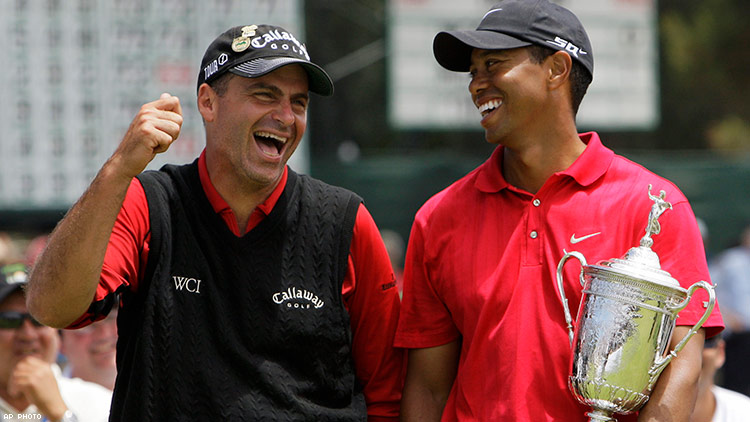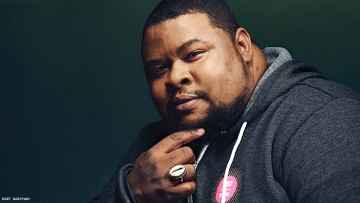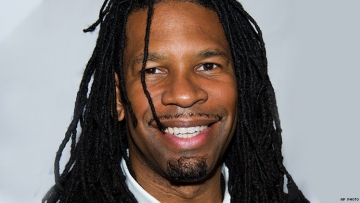The U.S Open is seen by many as the most difficult of the four Majors in golf, a test of mental fortitude and ability. The rough is cut higher. The fairways are deliberately narrow, the greens fast and unpredictable with the simplest of errors yielding devastating results. Where other tournaments can be won with scores of double-digits under par, at the U.S. Open, an even par scorecard is often enough to net a victory. To even have a chance to win, a player needs to be at his physical and mental best. Or be Tiger Woods.
Two months before the 2008 U.S. Open at the famed Torrey Pines South Course in La Jolla, Calif., Woods underwent a third arthroscopic surgery on his ailing knee. The doctors repaired damaged cartilage, but left the ruptured anterior cruciate ligament (ACL) untouched, which was suffered during the 2007 British Open. He then endured a double stress fracture in his leg during the rehabilitation process. When told he needed to call it quits for the rest of the season, his response was classic Woods. Not only was he going to play in the upcoming U.S. Open, he was going to win.
Rocco Mediate was well-liked among his peers but mostly unknown to the public. In the 23 years since becoming pro in 1985, the golfer had notched a mere six wins. His swing was smooth, but more akin to a senior citizen on a public course than a professional golfer. The jovial 45-year-old was the 158th ranked player when he teed off in the 2008 U.S. Open, and even wore his player ID badge under his sweater just in case he wasn’t recognized by the course personnel. Few expected him to make the cut, yet Mediate thought he had a chance.
After the first round, Woods was playing poorly and tied for 19th place; Mediate was behind one stroke. On Friday, he continued to play well while Woods, in obvious pain and limping, dropped even further back. Many observers wondered if he would even finish the round. Woods started his back nine with a tee shot that sailed wide right, rolling just off a cart path. With his steel-spiked shoes on the concrete path, he swung and hit a ball that landed on the green and gave him a good chance at birdie. In the process though, his shoe slipped with a noticeable crunching sound in his leg. As he walked to the green, clearly suffering, he had an epiphany. He realized he could not only play through the pain, but that he could also win.
He went on to birdie four of the next five holes. By the end of the round, he and Mediate were tied for second place, but he then opened the third round by dropping three strokes on the first two holes. At the 13th hole, he was in trouble again. He sliced his tee shot wide right and was looking at a difficult recovery just to make par. Instead, he hit what looked to be a perfect shot into the hole on the fly. Though unfortunately for Woods, the ball hit the pin and kept rolling to the back of the green. He was now facing a long downhill putt that broke to the left some ten feet from the hole. If the ball did not go in the hole, it would roll another 30 feet off the green. Even still, he simply sunk the putt for eagle. He followed this with a chip-in from the rough for birdie on the 17th, and he capped off the day with another long putt for eagle on the final hole.
By the end of the round, Woods had the lead while Mediate sat two strokes back in third place. In the 13 previous Majors tournaments where he was tied or better, going into the final round, Woods had come away with the win. But as he approached the final hole on the final Sunday, he had dropped to one back of Mediate. Woods was clearly in pain, wincing and doubling over as his tee shot went left into a fairway bunker. His next shot went wide right into the rough. With water in front of the green and a bunker on the right, there was only a small window in which he could safely land the ball. Tiger responded with the required shot, which he then sank for a birdie. Woods and Mediate were tied for the lead at the end of regulation.
Most other tournaments would send players to a sudden death playoff, with the first golfer to win a hole awarded the victory. But the U.S. Open never makes anything that simple. Both golfers would have to survive an 18-hole playoff the following day to decide the winner, and even that wasn’t enough as they were tied again after the playoff. Only then did they go to a sudden death format and on the 91st hole, Mediate finally cracked. Woods won the hole and the 2008 U.S. Open with a par putt.
The win was the crowning moment of Tiger’s storied career. He was at the top of his game, seemingly on his way to smashing Jack Nicklaus’ record of 18 Majors. Sadly though, the win would prove to be the last of his Majors victories to date. Since that win, he has undergone multiple surgeries including on his knees and back, ACL reconstruction, and spinal fusion. Even more difficult, perhaps was the very public exposure of his personal life.
While it's been a long road back, at age 42, Woods finally appears to have recovered physically and mentally. His game is wiser now, no longer trying to outdrive the competition; instead he is content. Woods appears more relaxed, yet his signature dominant aura that makes others wilt under pressure is back as strong as ever.
With his recent two-stroke win at the season finale Tour Championship, Woods now has 80 tournament victories and is just two off the record 82 held by Sam Snead. He makes no secret that he places the highest value on winning Majors though. He still sits at 14, trailing only the legendary Jack Nicklaus. Will Woods catch or surpass the Golden Bear for the one record he seeks above all others? Some might say the odds are against him, but this Tiger Woods has shown that anything is possible.















READER COMMENTS (